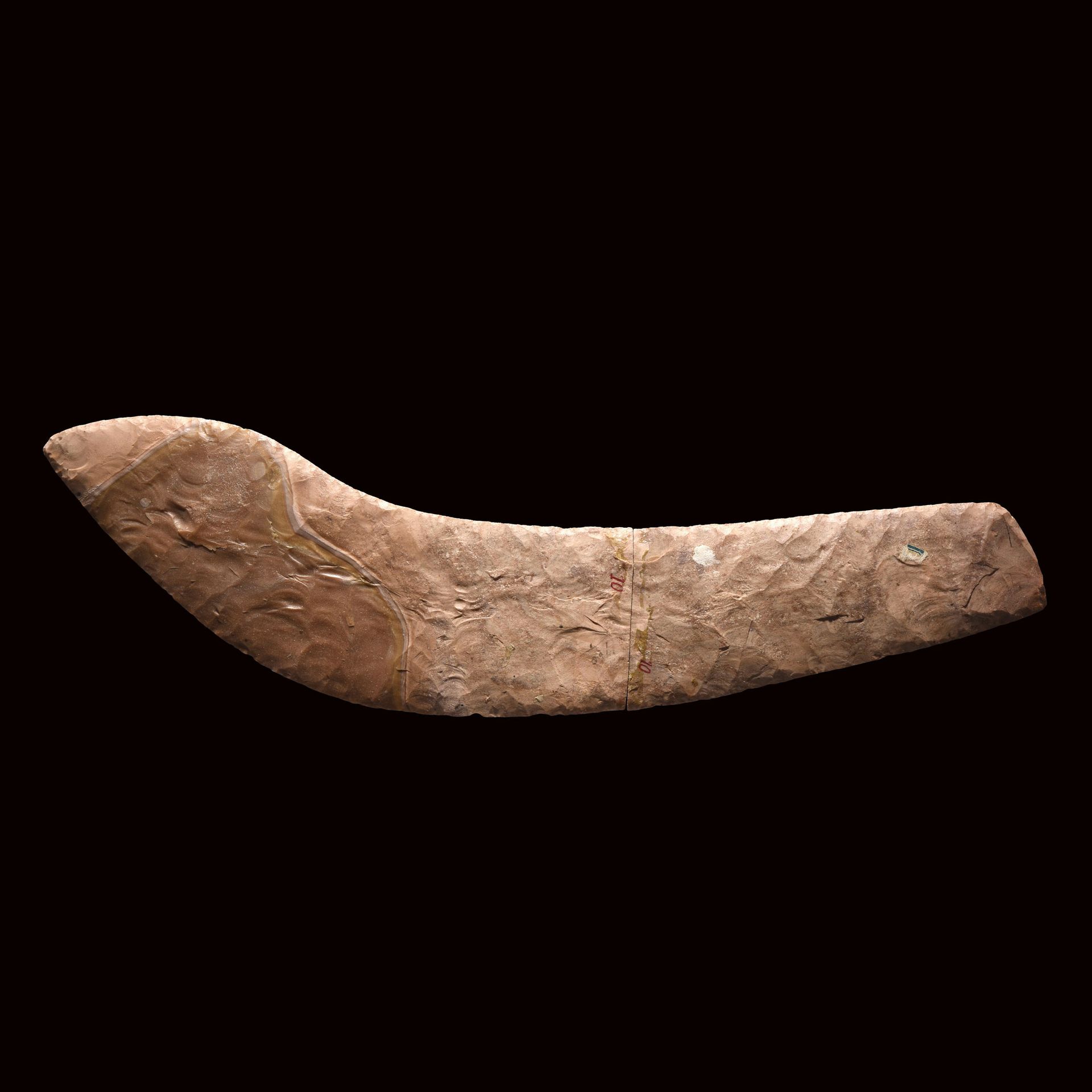Description
KNIFE BLADE Egypt, Naqada III, c. 3200-3000 B.C. Flint. Broken into two parts. Inventory number in red ink on each part "10". Trace of an old collector's label. L. approx. 40 cm Provenance Former French collection, Armand Trampitsch, acquired 1930-1960 By descent since the 1970s An exquisite example of a long knife blade designed as a hand tool or to be used as a short scythe at the end of a wooden shaft. The two-sided tool was shaped via the percussion chipping method which is highlighted by the rough serrations and a finer, softer style of cutting was used to create a smoother, more uniform blade edge along the right side. Both sides have naturally smooth surfaces with mottled hues of caramel, gray, beige, wheat, citrine and coffee. An Egyptian predynastic flint blade. This exquisite example of a long knife blade designed as a hand tool or to be used as a short scythe at the end of a wooden shank. The bifacial tool was shaped via the percussive chipping method which is highlighted by the rough serrations and a thinner, softer trimming style was used to create a smoother, more even blade edge along on the right side. Both sides feature naturally smooth surfaces with mottled hues of caramel, gray, beige, wheat, citrine and coffee. Naqada III, ca. 3200-3000 B.C.
15
KNIFE BLADE Egypt, Naqada III, c. 3200-3000 B.C. Flint. Broken into two parts. Inventory number in red ink on each part "10". Trace of an old collector's label. L. approx. 40 cm Provenance Former French collection, Armand Trampitsch, acquired 1930-1960 By descent since the 1970s An exquisite example of a long knife blade designed as a hand tool or to be used as a short scythe at the end of a wooden shaft. The two-sided tool was shaped via the percussion chipping method which is highlighted by the rough serrations and a finer, softer style of cutting was used to create a smoother, more uniform blade edge along the right side. Both sides have naturally smooth surfaces with mottled hues of caramel, gray, beige, wheat, citrine and coffee. An Egyptian predynastic flint blade. This exquisite example of a long knife blade designed as a hand tool or to be used as a short scythe at the end of a wooden shank. The bifacial tool was shaped via the percussive chipping method which is highlighted by the rough serrations and a thinner, softer trimming style was used to create a smoother, more even blade edge along on the right side. Both sides feature naturally smooth surfaces with mottled hues of caramel, gray, beige, wheat, citrine and coffee. Naqada III, ca. 3200-3000 B.C.
